Bidens aurea, Apache Beggarticks
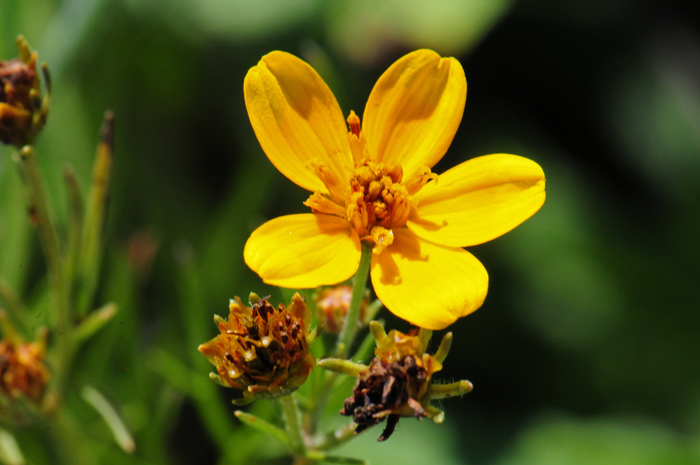
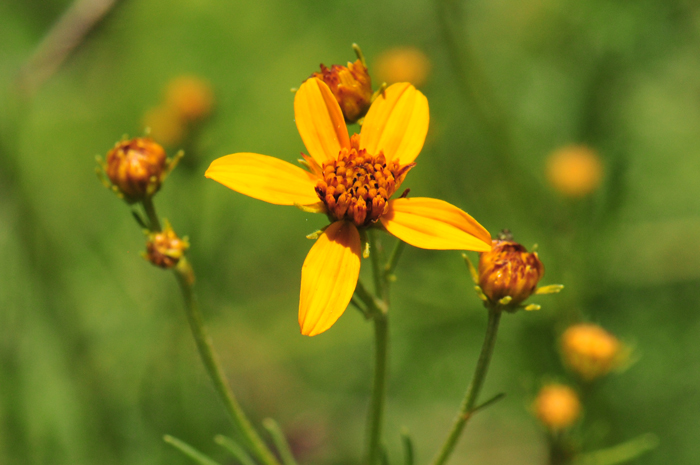
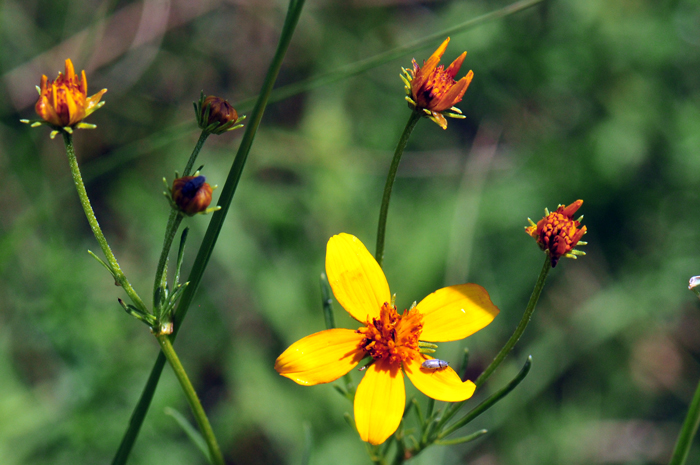
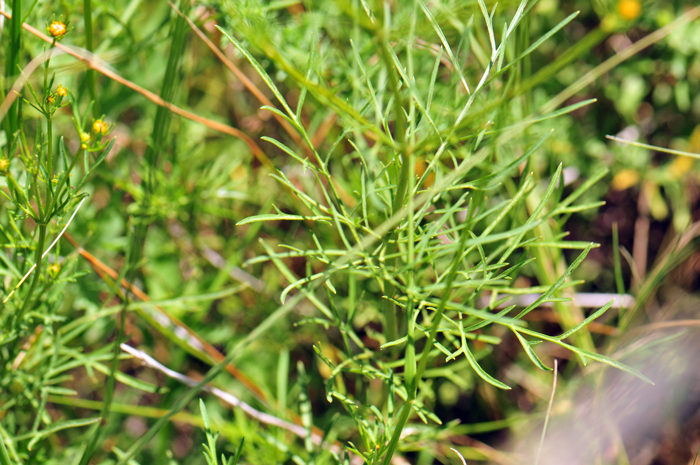
Scientific Name: Bidens aurea
Common Name: Apache Beggarticks
Also Called: Arizona Beggarticks
Family: Asteraceae, Sunflower Family
Synonyms: (Bidens aurea var. wrightii, Bidens ferulaefolia, Bidens ferulifolia, Bidens heterophylla, Bidens heterophylla var. wrightii, Bidens tetragona, Coreopsis aurea, Coreopsis ferulifolia)
Status: Native, Bidens aurea has been introduced in Europe and South America where it has become naturalized.
Duration: Perennial
Size: 4 to 19 to 40 inches (50-100 cm), rarely 100 inches (250 cm).
Growth Form: Forb/herb; stems erect, 4-angled, slim branches, plants glabrous young plants rarely pubescent.
Leaves: Green; leaves with stems (petiole), leaf blades deltate or lanceolate or oblong, sometimes pinnately lobed, margins entire or sharply serrate.
Flower Color: Yellow, some white; flowers with both ray (5 or 6) and disk (12 to 20) flowers (radiate); flowering stems or inflorescence a flat-topped panicle; fruit dark brown to blackish cypsela (mistakenly referred to as an achene) with barbed awns.
Flowering Season: July or August through September or October.
Elevation: 3,000 to 6,000 feet (900-1,800 m)
Habitat Preferences: Moist sandy soil along streams, marshes, seeps and springs.
Recorded Range: Apache Beggarticks is relatively rare in the United States where it is found primarily in southern Arizona and Apache County Arizona; it is also native to Mexico southward to Guatemala. Bidens aurea has been introduced in Europe and South America where it has become naturalized in France and Italy.
North America & US County Distribution Map for Bidens aurea.
North America species range map for Bidens aurea:
North American range map courtesy of Virginia Tech, Dept. of Forest Resources & Environmental Conservation
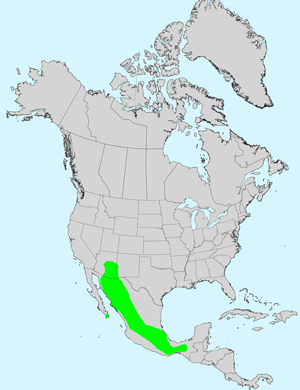
U.S. Weed Information: Unknown
Invasive/Noxious Weed Information: Unknown
Threatened/Endangered Information: Unknown
Wetland Indicator: In North America Bidens aurea has the following wetland designations:
Arid West, OBL;
Western Mountains, Valleys, and Coast, OBL.
OBL = Obligate Wetland, almost always occur in wetlands
The genus Bidens was published by Carl Linnaeus in 1753.
In the Southwestern United States: Arizona, New Mexico and Texas each haves 12 species of Bidens, California has 7 species, Nevada and Utah each have 4 species. All data approximate and subject to revision.
Comments: Apache Beggarticks is a handsome wildflower in Arizona and is easy to grow in full sun in well-drained soils. Interestingly, Apache Beggarticks, which is called Arizona Beggarticks in the United Kingdom, is a popular garden species with both plants and seeds sold on-line.In Southwest Desert Flora also see Bigelow's Beggarticks, Bidens bigelovii Fewflower Beggarticks, Bidens leptocephala and Smooth Beggartick, Bidens laevis.
The genus Bidens was published by Carl Linnaeus in 1753.
The species epithet "aurea" translated directly means "golden" a reference to the color of the flowers or phyllaries?
Bidens common names include; Beggarticks, Black Jack, Burr Marigolds, Cobbler's Pegs, Spanish Needles, Stickseeds, Tickseeds and Tickseed Sunflowers, all references to the barbed awns or pappi on the fruit.

